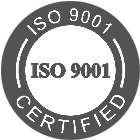The world of work has undergone a seismic shift. Hybrid work models, once a perk, are now a mainstay for many organizations. This new era of flexibility presents exciting opportunities but also poses unique challenges. Traditional workplace strategies and metrics simply don't cut it anymore. To truly thrive in a hybrid environment, organizations need to embrace data-driven decision-making, and that's where hybrid work analytics comes in.
This article unveils the power of these analytics to create effective strategies, improving resource coordination and employee experiences in a flexible work environment.
TL;DR:
- Traditional office metrics, like time spent at desks, are outdated in a hybrid environment. Hybrid work demands new ways to measure productivity, collaboration, and employee engagement, focusing on outcomes rather than physical presence.
- Hybrid work analytics provide the insights organizations need for data-driven decisions. These insights help with visibility into employee work locations, space utilization, and policy compliance, enabling better coordination, resource allocation, and adherence to hybrid work policies.
- Key metrics to track include employee work location trends, attendance patterns, space utilization, and employee satisfaction. These metrics help organizations optimize office space, monitor employee well-being, and ensure fair implementation of hybrid work policies.
- Hybrid work analytics help organizations make smarter, more efficient decisions. They improve productivity, foster better collaboration, reduce costs by optimizing office space, and ensure employees are engaged and balanced in their work-life experience.
- Workplace management platforms are crucial for collecting and analyzing hybrid work data. These platforms provide valuable insights into work location trends, space usage, and policy compliance, helping organizations optimize their hybrid work strategies.
Why Hybrid Work Requires New Metrics and Tracking Systems
The traditional office setup, with its fixed desks and rigid schedules, offered a relatively straightforward way to measure productivity and resource allocation. However, the rise of hybrid work has transformed the way organizations operate, requiring new approaches to performance measurement and resource management.
Traditional Metrics Are Outdated
Many of the metrics organizations relied on in the past are no longer relevant in a hybrid world, such as time spent at a desk which is no longer a reliable indicator of productivity. With employees working from various locations and at different times, physical presence in the office is a poor measure of output. To such a point that in hybrid environments, performance is more accurately assessed through output, collaboration quality, and employee engagement rather than mere office presence.
Employee Engagement & Well-being Are Harder to Monitor
In a distributed workforce, it's more challenging to gauge employee morale, collaboration, and potential burnout. Nevertheless, hybrid work analytics can provide insights into how employees interact, their work patterns, and potential signs of burnout or disengagement. Consequently, methods for tracking these crucial aspects are essential.
Space Utilization & Resource Allocation
With fluctuating office attendance, it's difficult to optimize office space and resources. Understanding how and when employees use the office becomes critical for cost-effectiveness, which is why office spaces need to be optimized based on actual usage rather than static assignments.

Why Organizations Need Hybrid Work Analytics
Hybrid work analytics serve as the foundation for effective decision-making, providing organizations with the data needed to refine their workplace strategies. Organizations need insights to design work patterns that include the best of in-person work—which can support collaboration, innovation and learning—as well as independent work, which can support output, focus and deadlines.
Here are some key reasons why organizations need “people data”:
Visibility & Transparency
Understanding where employees work and when is crucial for seamless collaboration. Hybrid work analytics offer real-time insights into employee location trends, allowing managers to support team coordination and ensure adequate office capacity. By analyzing work location data, organizations can anticipate peak office days, streamline resource allocation, and minimize space shortages or underutilization. Additionally, real-time visibility into employee presence enhances cross-functional teamwork by facilitating in-person interactions, reducing scheduling conflicts, and improving meeting efficiency. Transparent reporting also fosters trust within teams, as employees can see when their colleagues are available for collaboration, ultimately enhancing productivity and engagement.
Workplace Optimization
Organizations can make informed real estate decisions based on office attendance patterns. By tracking utilization rates, companies can reduce excess office space and reallocate resources to better suit employee needs. Hybrid work analytics provide insights into the most frequently used areas of an office, allowing businesses to repurpose underutilized spaces for more functional work environments. This data-driven approach helps companies determine whether to downsize, expand, or redesign their office layouts to optimize costs and enhance employee experiences. Additionally, hybrid work analytics support smarter investment in office amenities, ensuring that resources such as meeting rooms, collaborative spaces, and quiet zones are aligned with actual workforce needs rather than assumptions.
Policy Compliance
Hybrid work policies require monitoring to ensure compliance with company guidelines. Analytics enable organizations to track adherence to work-from-home thresholds and other policies, ensuring a balanced and equitable work environment.
Hybrid Work Metrics: What to Track and Why It Matters
To optimize hybrid work, organizations must monitor key performance indicators that provide insights into work trends, space utilization, and employee satisfaction. Here are some of them:
Employee Work Location Trends:
In-Office vs. Remote Work Ratio
Understanding the balance between in-office and remote work helps organizations plan for space utilization and resource allocation. A structured hybrid work type of organization blends in-office collaboration with remote flexibility, offering a balanced approach to modern work. It involves predefined schedules that allow employees to split their time between remote and in-office work, promoting collaboration while accommodating flexibility.
Employee Attendance Patterns
Identifying peak days and times in the office allows for better management of resources and services. With this data, organizations can adjust staffing levels, ensure sufficient office supplies, and optimize workplace services such as cafeteria availability, cleaning schedules, and security presence. This proactive approach enhances employee experience and minimizes waste by aligning office operations with actual demand.
Time Spent in Different Locations/Workspaces
Tracking how employees utilize different workspaces (desks, meeting rooms, collaboration areas) provides insights for optimizing office design.
Office Space Utilization Data
Office Utilization Rate
Measuring the percentage of office space that is actually being used helps identify opportunities for consolidation or expansion. By analyzing occupancy trends, organizations can determine whether to scale back underutilized areas, sublease excess space, or reconfigure layouts to improve efficiency. This data-driven approach ensures that office environments align with actual workforce needs, reducing unnecessary costs while enhancing productivity and employee satisfaction. Additionally, understanding usage patterns enables companies to make informed decisions on investing in technology, furniture, and workplace amenities that maximize space effectiveness.
Desk & Meeting Room Occupancy Rates
Analyzing the occupancy rates of desks and meeting rooms allows for efficient allocation of these resources. Organizations can track how often workstations and meeting rooms are used, identifying high-demand areas and underutilized spaces. This enables better planning for desk-sharing models, reservation systems, and flexible seating arrangements. By understanding peak usage times, businesses can ensure that employees have access to the necessary resources while avoiding unnecessary expansions or underutilized office areas. Additionally, optimizing desk and meeting room allocation enhances collaboration, ensuring that employees can efficiently find, and book spaces suited to their tasks.
Employee Satisfaction Indicators
Employee Satisfaction with Hybrid Work
Employee satisfaction with hybrid work centers on factors like work flexibility, effective technology, and maintaining social connections among remote and in-office workers. It’s crucial for organizations to assess how well employees balance work and personal life, feel supported by leadership, and communicate across teams. Gathering feedback on the hybrid work experience helps organizations identify potential challenges in the hybrid model and enables them to make adjustments that improve overall satisfaction and productivity.
Burnout & Work-Life Balance Indicators
Burnout and work-life balance indicators focus on monitoring workload, employee stress levels, and time management to prevent exhaustion and maintain well-being. Key signs include excessive overtime, absenteeism, physical or mental health concerns, and employee feedback about workload pressures. Tracking these indicators allows organizations to address imbalances early, offering support like workload adjustments and mental health resources to ensure employees remain engaged and healthy.
Retention & Turnover Rates Among Hybrid Workers
Tracking retention and turnover rates among hybrid workers helps evaluate the effectiveness of hybrid work policies. High turnover or low retention may indicate dissatisfaction with hybrid arrangements, signaling the need for policy adjustments. Analyzing these rates alongside employee feedback can provide insights into the effectiveness of remote work models and help organizations improve employee satisfaction and reduce attrition.

The Business Benefits of Hybrid Work Analytics
Organizations that leverage hybrid work analytics gain a competitive edge by making data-driven decisions that enhance efficiency, employee well-being, and cost-effectiveness. Here are several keyways in which hybrid work analytics can benefit organizations:
Data-Driven Decision-Making for HR & Leadership
Hybrid work analytics empower HR teams and organizational leadership to make data-driven decisions about workplace strategies, policies, and resource allocation. For example, instead of relying on assumptions or outdated practices, leaders can use real-time data to ensure that flexible work policies meet employees' needs while preserving overall performance. This data-driven approach allows organizations to implement policies that are not only effective but also aligned with the evolving landscape of work.
Improving Collaboration and Team Coordination
Understanding teamwork patterns and location preferences facilitates better communication and collaboration. By analyzing patterns related to location preferences, communication frequencies, and project timelines, organizations can optimize their scheduling and meeting structures. This allows managers to coordinate in-office days that maximize team interactions, identify opportunities to enhance communication channels, bridge remote gaps, and encourage cross-functional cooperation.
Ensuring Fairness & Compliance in Hybrid Work Policies
Analytics helps ensure that all employees adhere to the company’s hybrid work policies while maintaining a fair and flexible work environment. By tracking individual work patterns, attendance, and location choices, organizations can ensure that employees follow the established hybrid work guidelines. Additionally, data-driven insights can help ensure that employees have equal access to opportunities, regardless of whether they work in the office or remotely, promoting a more inclusive and flexible work.
Reducing Operational Costs with Space Optimization
Through data-driven insights into employee attendance, office utilization, and work location preferences, companies can better understand how their physical spaces are being used. This allows organizations to make informed decisions about reducing office square footage, reconfiguring shared workspaces, or adjust facilities to align with actual usage patterns. By optimizing office space and resources, organizations can significantly reduce operational costs and create a more sustainable and efficient workplace.
Workplace Management Platforms: The Source of Hybrid Work Analytics
Workplace management platforms are the key to collecting and analyzing hybrid work data. These platforms provide a centralized hub for managing hybrid work schedules, booking resources, and generating valuable insights.
YAROOMS is a prime example of a comprehensive workplace management platform that empowers organizations to optimize their hybrid work strategies. The software features a hybrid work status calendar that allows employees to easily indicate their work location (in the office, at home, on vacation). This provides real-time visibility for team members and managers. Furthermore, YAROOMS allows administrators to define specific rules, such as work-from-home thresholds, to structure the hybrid work arrangement and ensure policy compliance.
Based on these employee-defined statuses, YAROOMS generates comprehensive hybrid work analytics reports. Managers can access these reports to see how much time employees spend working from the office or remotely, compare work trends across teams and departments, identify any gaps, and ensure the organization’s hybrid work requirements are being met. These insights help improve planning, streamline team management, and adjust policies for greater productivity.

Beyond hybrid work scheduling, YAROOMS also offers powerful space booking capabilities, allowing employees to reserve desks, meeting rooms, and other resources in advance. This is crucial for hybrid teams, ensuring that employees have the resources they need when they come into the office.
YAROOMS' workplace analytics go beyond hybrid work status, offering detailed space utilization reports. These reports provide insights into office utilization rates, desk and meeting room occupancy, and other key metrics, enabling organizations to optimize their workspace design and resource allocation. This comprehensive approach to workplace analytics empowers organizations to make data-driven decisions that improve efficiency, reduce costs, and enhance the employee experience.
Final Thoughts: Inspiring a New Era of Workplace Optimization
Hybrid work is here to stay, and its success relies on data-driven decisions. It’s not just about keeping up with change—it’s about actively shaping the future of how we work. With the right insights, companies can build smarter, more efficient environments that cater to both employee needs and business goals. This era of workplace optimization is all about moving beyond adaptation to truly defining the future of work.











